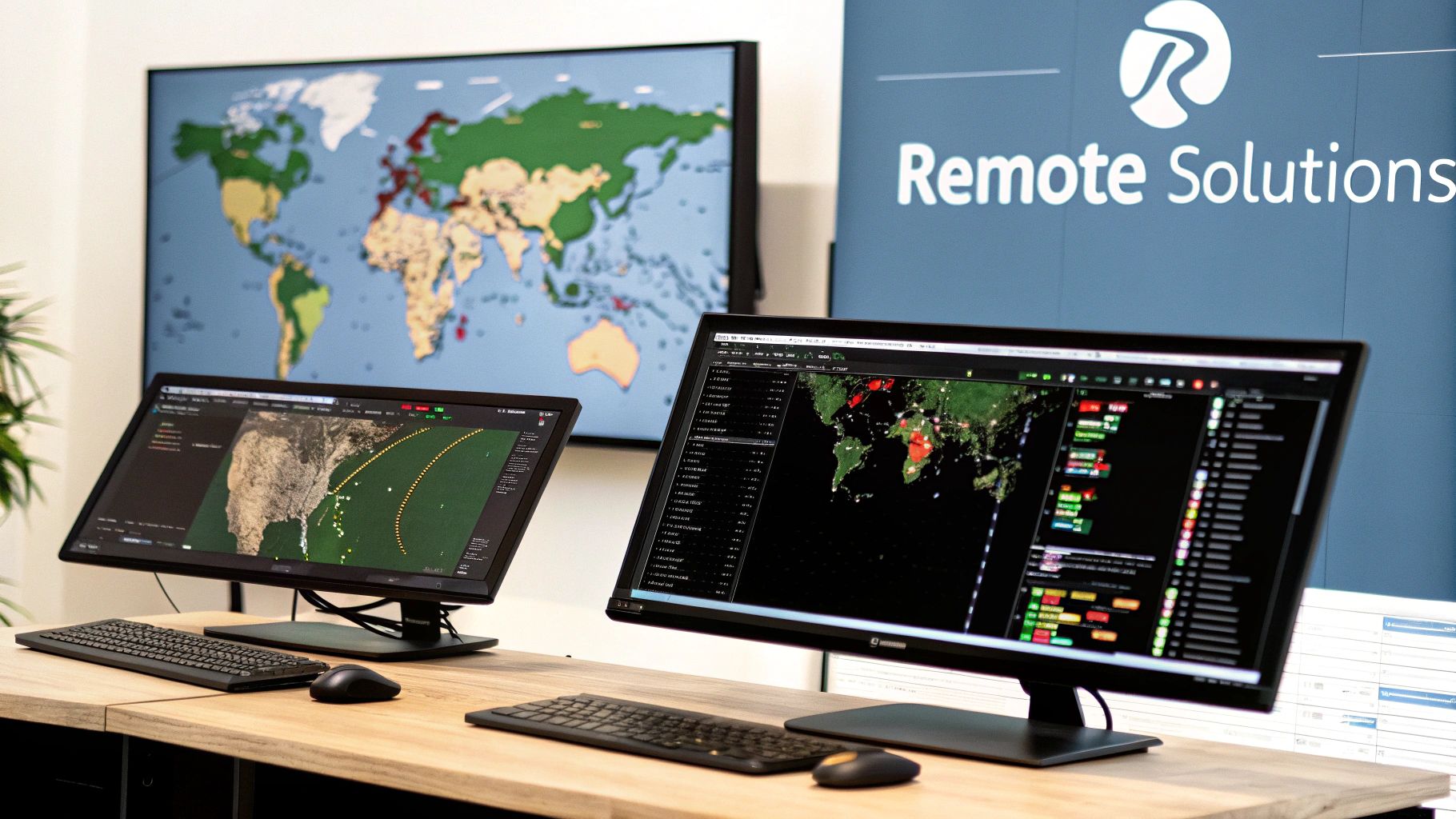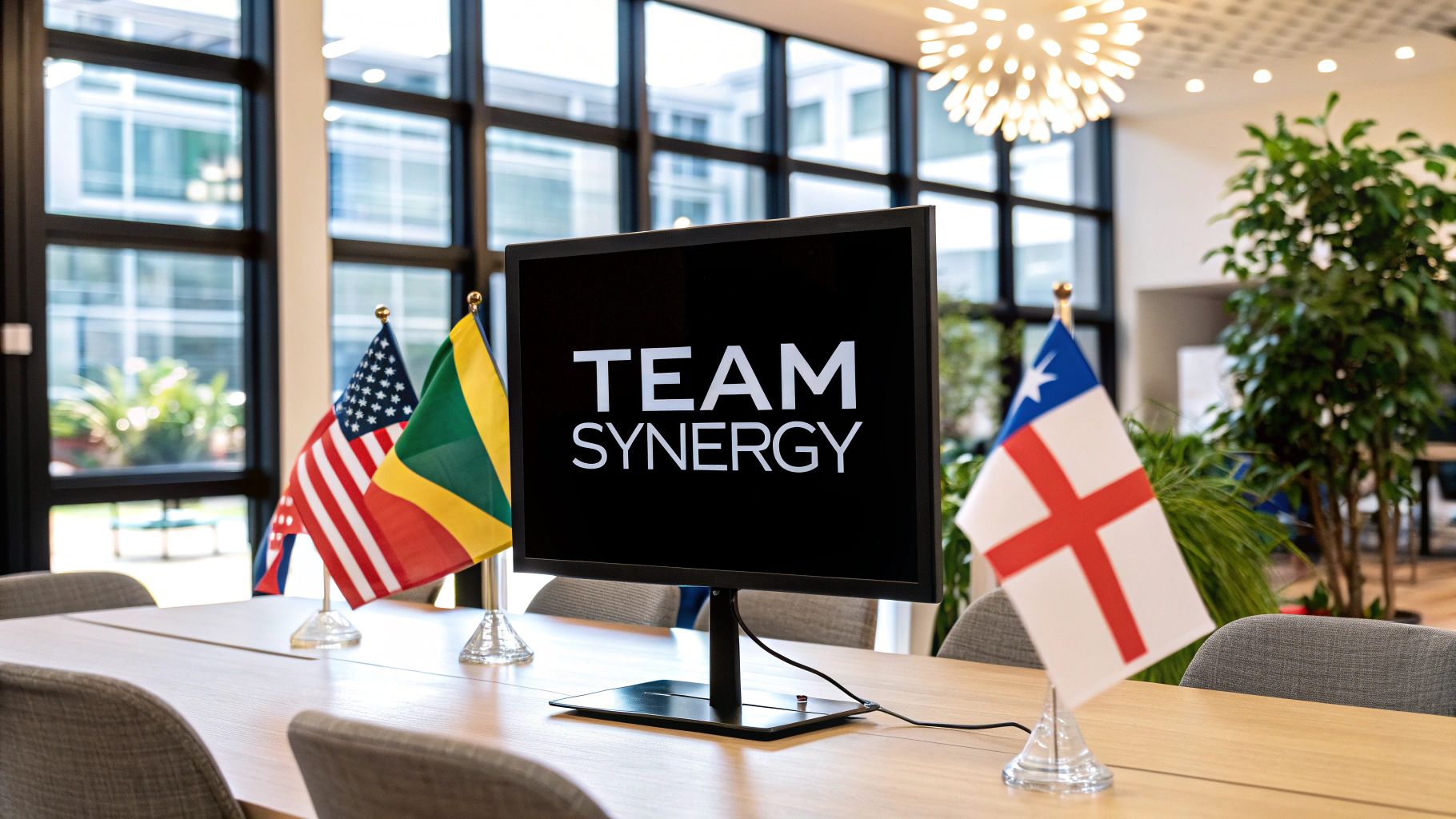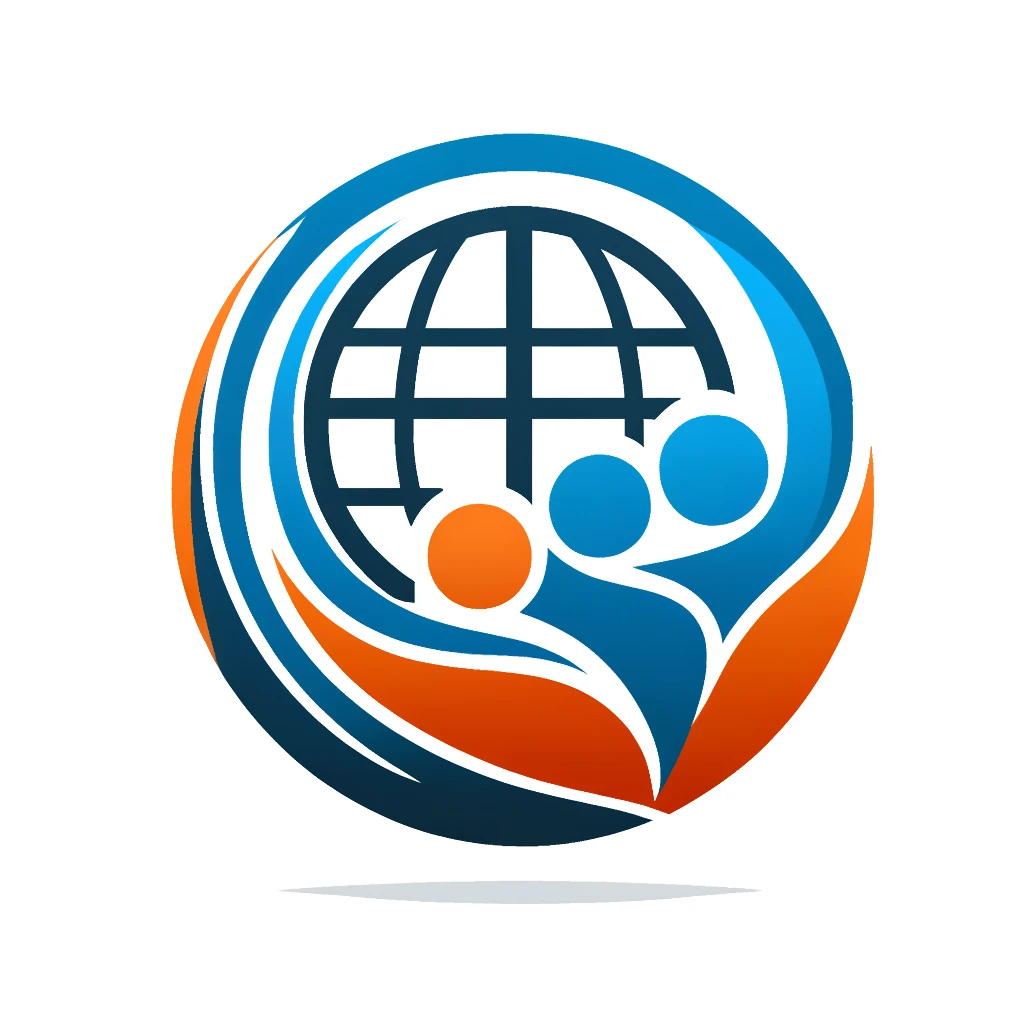Navigating Today's Global Workforce Landscape

Our interconnected world offers incredible opportunities for businesses with a global reach. But it also presents some unique challenges. Managing a diverse, international team requires more than just traditional management methods. It demands a deep understanding of the varied needs and expectations of individuals across the globe.
Think about the differences in cultural contexts and economic realities. These factors influence employee perspectives and require a thoughtful approach to international human resource management. Leading a global team isn't simply about coordinating schedules across time zones.
It’s about truly understanding the individual motivations, preferred work styles, and communication nuances that are unique to each region. And the global landscape is always changing. Demographics shift, technology advances, and economies fluctuate. Adapting to these changes requires continuous learning and a willingness to explore new management approaches.
The global workforce has grown to an unprecedented 3.627 billion workers in 2023. This presents a significant task for organizations in both the public and private sectors. They must find a balance between managing expectations and allocating resources effectively. Public sector organizations, encompassing approximately 20% (675 million) of the global workforce, must navigate the delicate balance between employee needs and budgetary constraints. Meanwhile, private companies face the challenge of varying salary expectations across different regions. For more insights into these statistics, check out the People at Work 2023: A Global Workforce View.
Key Considerations For Managing A Global Team
Successfully managing a global workforce hinges on understanding several key areas:
-
Cultural Sensitivity: Respecting cultural differences is paramount. This includes adapting communication styles to be culturally appropriate, acknowledging regional holidays and customs, and understanding diverse perspectives on work-life balance.
-
Legal And Regulatory Compliance: Navigating the intricacies of international labor laws, tax regulations, and data privacy requirements is crucial for ethical and legal operations. Compliance is not just good practice – it’s essential.
-
Communication Strategies: Clear communication channels and protocols are essential. These should bridge language barriers and time zone differences, promoting smooth and efficient teamwork.
-
Compensation And Benefits: Designing competitive compensation and benefits packages is vital for attracting and retaining top talent. These packages should consider regional cost-of-living disparities and cultural expectations.
-
Technology And Infrastructure: Using technology effectively can greatly enhance communication, collaboration, and project management across geographical boundaries. This is key for operational efficiency.
To better understand the varying expectations across different regions, let's examine the following table:
Regional Workforce Expectations Comparison
| Region | Expected Salary Increase | Career Advancement Confidence | Primary Work Values |
|---|---|---|---|
| North America | 4-6% | High | Work-life balance, career growth, recognition |
| Europe | 2-4% | Moderate | Job security, work-life balance, benefits |
| Asia | 5-8% | High | Career growth, learning, compensation |
| Latin America | 3-5% | Moderate | Job security, benefits, work-life balance |
This table highlights some general trends in workforce expectations. While North American employees prioritize work-life balance and career growth, Asian employees emphasize career growth, learning, and compensation. These differences underscore the need for tailored management strategies in each region.
By acknowledging these key areas, organizations can create truly global teams that flourish on diversity and achieve outstanding results. Embracing the intricacies of a global workforce unlocks incredible opportunities for growth and innovation in the international marketplace.
Unlocking Engagement Across Borders and Cultures

Leading a thriving global team takes more than just good management; it requires a deep understanding of how to truly connect with employees from diverse cultural backgrounds. Traditional engagement strategies often miss the mark because they don't consider the unique values and motivations that shape a global team. Leaders need to adapt their approach to resonate with individuals from all walks of life.
What inspires an employee in Japan might be entirely different from what motivates their counterpart in Brazil. Cultural values are fundamental to what individuals find rewarding and engaging in their work. Understanding these nuances is the key to creating a workplace where every team member feels valued and motivated. Generational differences add yet another layer to the engagement puzzle, especially within a global context.
This challenge is highlighted in the Gallup 2023 State of the Global Workplace Report. The report revealed that a mere 23% of employees worldwide felt engaged at work. A staggering 62% were not engaged, and 15% were actively disengaged. These low engagement numbers underscore the urgent need for strategies that effectively address the complexities of a global workforce.
Measuring Engagement Across Cultures
Measuring engagement in a global setting requires a more thoughtful approach than standard surveys. Simply translating a survey won't provide accurate insights because the same question can be interpreted differently across cultures.
-
Cultural Nuances: Pay close attention to cultural norms around feedback and communication styles. Direct feedback may be appreciated in some cultures, while it could be perceived as disrespectful in others.
-
Language Barriers: Ensure surveys are accessible in multiple languages and culturally adapted. This avoids misinterpretations and guarantees everyone can participate meaningfully.
-
Qualitative Data: Combine quantitative data with qualitative methods, such as focus groups and one-on-one interviews. This offers a deeper understanding of employee experiences.
Building Connection In Hybrid Environments
The rise of hybrid work presents another layer of complexity in managing a global workforce. It necessitates fostering connection and collaboration across both physical and digital spaces.
-
Intentional Communication: Encourage regular communication and establish clear channels for information sharing. This ensures that everyone feels connected, no matter where they are working.
-
Inclusive Meetings: Design meetings that effectively include both remote and in-person participants. This prevents remote workers from feeling left out.
-
Virtual Team Building: Invest in virtual team-building activities that promote interaction and connection across different time zones and cultures.
By embracing these strategies, organizations can cultivate a more engaging and inclusive environment for their global team. Ultimately, this approach leads to greater productivity and success. These methods acknowledge the unique needs and perspectives of individuals across borders and cultures, fostering a true sense of belonging and connection.
Tech Tools That Transform Global Team Management

Beyond simply boosting team engagement, technology now plays a vital role in simplifying the intricate world of global workforce management. It's much more than just setting up video calls. It involves creating a dynamic network of tools designed to tackle the specific hurdles of coordinating teams separated by time zones, languages, and cultural differences.
This shift reflects a broader movement in international business. The workforce management technology market is predicted to hit $6.5 billion in 2023, expanding at a 9.6% annual rate through 2030. This growth is happening worldwide, with Europe leading the charge due to its intricate labor laws and the integration of Artificial Intelligence (AI). More detailed statistics can be found here.
Essential Technologies for Global Teams
Certain technologies are becoming indispensable for successfully managing a worldwide team. These tools empower individuals to connect, collaborate, and contribute effectively, no matter where they are located.
-
Project Management Platforms: Tools like Asana, Trello, and Monday.com provide centralized hubs for managing tasks, deadlines, and progress. This fosters transparency and accountability across geographically dispersed teams.
-
Real-Time Communication Tools: Instant messaging platforms like Slack and Microsoft Teams facilitate rapid communication and collaboration, effectively bridging the gaps created by time zones. These tools become the heart of efficient information exchange.
-
Translation and Interpretation Software: Services like Google Translate and DeepL help break down language barriers, allowing for clearer communication within diverse teams. This ensures that everyone understands and feels understood, promoting inclusivity and collaboration.
-
Cloud-Based HR Systems: These systems act as a central repository for employee information, performance reviews, and payroll data. This simplifies HR processes and ensures data consistency across the globe, making it easier to manage a global workforce.
Leveraging AI and Analytics
Artificial intelligence and data analytics are also reshaping how global teams are managed. These tools offer invaluable information about team performance, engagement levels, and opportunities for improvement.
-
Predictive Analytics: AI can examine information to anticipate potential problems, such as employee turnover risk in particular areas, enabling preemptive solutions.
-
Performance Management: Analytics can provide insights into both individual and team performance, based on real data. This allows managers to recognize high achievers and provide targeted support where needed.
To better illustrate the current adoption and growth trends of these technologies, let's look at the regional breakdown:
Global Workforce Management Technology Adoption
| Region | Market Share | Growth Rate | Primary Technology Focus | Key Drivers |
|---|---|---|---|---|
| North America | 35% | 8% | Cloud-based solutions, AI-powered analytics | Demand for flexible work arrangements, focus on employee engagement |
| Europe | 40% | 10% | AI integration, compliance with complex labor regulations | Stringent data privacy laws, need for streamlined HR processes |
| Asia Pacific | 20% | 12% | Mobile-first solutions, real-time communication tools | Rapidly growing economies, increasing adoption of digital technologies |
| Rest of World | 5% | 5% | Basic project management and communication tools | Emerging markets, focus on cost-effective solutions |
This table highlights the varying levels of technology adoption and the unique factors driving growth in each region. It underscores the importance of tailoring technology strategies to the specific context of each market.
Choosing the Right Tech Stack
Choosing the right technology isn't a one-size-fits-all process. The best combination of tools will depend on the unique requirements of your organization.
-
Scalability: Select tools that can expand with your organization’s development and adjust to evolving requirements.
-
Integration: Ensure the tools you choose work together efficiently to prevent data silos and optimize workflows.
-
User Adoption: Focus on user-friendly tools that your global team can readily adopt and use effectively.
-
Regional Considerations: Remember local data privacy regulations and potential infrastructure challenges when selecting technologies for various areas.
By carefully choosing and implementing the right technology, organizations can build a truly effective and collaborative global workforce. This interconnected system empowers teams to work smoothly across geographical boundaries, leading to greater productivity and overall success. This forward-thinking approach allows companies to harness the full potential of a diverse and global talent pool.
Building Cultural Intelligence in Your Leadership Team

Successfully managing a global workforce takes more than just understanding international business. It requires a deep appreciation for cultural nuances and the ability to adapt leadership styles to truly connect with people from all walks of life. This is where cultural intelligence comes into play. Building this intelligence within your leadership team is crucial for thriving on the world stage.
Cultural differences can subtly, yet powerfully, impact management strategies. What inspires a team in one country might not work in another. For instance, individual recognition might be highly valued in some cultures, while collective achievement is prioritized in others. Recognizing these distinctions is the first step toward building stronger global teams.
Successful global managers possess a high degree of cultural intelligence. This allows them to navigate these complexities with grace and genuine understanding. They move beyond superficial knowledge, demonstrating real respect for diverse perspectives.
Developing Cultural Intelligence: A Practical Approach
Developing cultural intelligence doesn't happen overnight. It takes a conscious commitment to learn, adapt, and grow. Here are some practical approaches to cultivate this critical skill within your leadership team:
-
Embrace Lifelong Learning: Encourage continuous learning about different cultures. This includes exploring customs, communication styles, and business etiquette. Consider workshops, books, or engaging with cultural experts.
-
Foster Self-Awareness: Encourage leaders to reflect on their own cultural biases and assumptions. This self-awareness is essential for understanding how their perspectives might differ from those of team members from other cultures.
-
Develop Active Listening Skills: Active listening is more than just hearing words. It's about truly understanding the message, including nonverbal cues and cultural context.
-
Practice Empathy: Encourage leaders to put themselves in the shoes of their team members from different cultures. This empathy helps build stronger relationships and fosters mutual understanding.
-
Seek Feedback: Create a culture of open and honest feedback. This allows leaders to learn from their experiences and improve their approach to cross-cultural management.
Adapting Leadership Styles for a Global Workforce
Leading effectively in a global setting demands flexibility and adaptability. Leaders must adjust their style to fit the particular cultural environment. This may mean adapting communication styles, decision-making processes, and conflict resolution approaches.
-
Communication: Consider direct versus indirect communication styles and adapt as needed. Direct feedback is valued in some cultures, while a more nuanced approach is preferred in others.
-
Decision-Making: Understand the cultural preferences for individual versus collective decision-making. Collaborative decisions are valued in some cultures, while individual autonomy is prized in others.
-
Conflict Resolution: Learn how different cultures handle disagreements. Some prefer a direct approach, while others favor a more indirect and collaborative style. Adapting to these preferences can strengthen team dynamics.
By building cultural intelligence and adapting leadership styles, organizations can tap into the full potential of their global teams. This creates a more inclusive environment where individuals from diverse backgrounds can thrive. This, in turn, fuels innovation, boosts productivity, and drives success in the global marketplace.
Creating Compensation Strategies That Work Everywhere
Crafting compensation strategies for a global team is a delicate balancing act. It's about ensuring fairness within your organization while also staying competitive in diverse markets around the world. This means understanding not just salary expectations but also the cost of living, taxes, and cultural nuances that influence how your employees perceive value.
This challenge is made even more complex by the ever-shifting global economy. Currency fluctuations can dramatically change the real value of salaries, requiring regular adjustments to maintain fairness and competitiveness. Staying on top of these fluctuations is key to attracting and keeping top talent in today's interconnected world. Additionally, every country's tax system is unique, impacting an employee's take-home pay. A truly effective compensation strategy must take all of this into account.
Navigating the Complexities of Global Compensation
Building a compensation strategy that transcends borders demands a thoughtful, multi-pronged approach:
-
Establishing a Global Compensation Philosophy: This philosophy articulates your organization's core values around compensation. Think fairness, transparency, and competitiveness. This creates a solid foundation for consistent decision-making across all your locations.
-
Conducting Thorough Market Research: Deeply understanding regional salary benchmarks, benefits expectations, and cost-of-living data is crucial. This information empowers you to create compensation packages that are truly competitive in each location.
-
Considering Currency Fluctuations and Tax Implications: Put systems in place to adjust salaries in response to currency changes and factor in local tax laws. This is essential for maintaining equity. Specialized compensation software or consulting services can help navigate these complexities.
-
Developing Culturally Relevant Benefits Packages: Remember, compensation goes beyond just salary. Benefits are a crucial component of the total package. Consider cultural preferences when designing benefits. For example, comprehensive healthcare might be highly valued in one culture, while generous paid time off is prioritized in another.
Designing Performance-Based Compensation
To effectively motivate a global workforce, a performance-based compensation approach is key. It needs to resonate across different cultures and motivate everyone to contribute their best. This means:
-
Establishing Clear Performance Metrics: Define performance goals that are clear, measurable, and achievable. These goals should be aligned with your overall business strategy and adapted to fit local contexts.
-
Providing Regular Performance Feedback: Regular and constructive feedback is crucial for employee growth and motivation. Be sure to tailor your feedback style to the local culture. Some cultures appreciate direct feedback, while others prefer a more subtle approach.
-
Recognizing and Rewarding Performance: Design reward systems that resonate across cultures. This could include bonuses, promotions, or other forms of recognition customized to regional preferences.
Communicating Total Rewards Effectively
Open communication about compensation is vital. Employees need to understand and appreciate the value of their total rewards package. However, transparency is perceived differently around the world. Some cultures embrace open discussions about salary, while others prefer discretion.
-
Adapt Communication Strategies: Customize your communication style to match local cultural norms around transparency. In some regions, detailed breakdowns of compensation structures are welcome, while in others, a more general overview is preferred.
-
Use Multiple Communication Channels: Utilize various channels, such as email, your company intranet, and in-person meetings, to ensure your message reaches everyone effectively.
-
Offer Localized Information: Translate compensation information into local languages and make it easily accessible to all employees.
By implementing a thoughtful and thorough approach to compensation, you can build a strong, motivated global team, no matter where they are located. Remember, effective global workforce management recognizes that compensation is about more than just a paycheck. It's about creating a total rewards package that values the diverse needs and expectations of individuals worldwide. This investment in fair and competitive compensation is essential for attracting, retaining, and inspiring the best talent on a global scale.
Unlocking Global Talent Mobility That Delivers Results
Managing a global workforce effectively depends on the strategic movement of talent across borders. When done well, global talent mobility benefits both the organization and its employees. It's about creating clear career pathways that allow for growth and development while contributing to the company's global goals. This takes careful planning, execution, and a deep understanding of the challenges and opportunities that come with international assignments.
Identifying and Developing High-Potential Talent
The first step in successful talent mobility is identifying those who can thrive in international roles. This means looking beyond technical skills and considering adaptability, cultural sensitivity, and a global mindset.
-
Global Mindset Assessment: Use assessments that evaluate candidates' ability to think globally and work effectively with people from diverse backgrounds.
-
Language Proficiency Evaluation: Consider language skills and provide language training.
-
Cross-Cultural Training: Offer training programs that equip employees with the skills to navigate cultural differences and succeed in new environments.
Designing Effective International Assignments
The design of the international assignment is critical for knowledge transfer and skill development. Assignments should have clear objectives and provide support.
-
Clear Objectives and Scope: Define the specific goals of the assignment and how it aligns with the organization’s overall global strategy.
-
Mentorship and Support: Provide mentorship and support networks to help employees adjust to new environments and succeed.
-
Knowledge Transfer Mechanisms: Establish ways to share knowledge both during and after the assignment. This could include regular reporting, documenting best practices, and presentations.
Repatriation Strategies: Preserving Global Experience
An important part of global talent mobility is repatriation. Bringing employees back into the home office requires planning to retain the valuable experience they've gained.
-
Pre-Assignment Repatriation Planning: Plan for repatriation before the assignment ends.
-
Integration Back into the Home Office: Provide support and resources to help repatriated employees reintegrate into the home office environment.
-
Knowledge Sharing Opportunities: Create opportunities for repatriated employees to share their knowledge and insights.
Overcoming Mobility Barriers
International assignments come with challenges, from visas and relocation to family needs. Addressing these proactively is essential.
-
Visa and Immigration Support: Offer comprehensive support with visa applications and immigration processes.
-
Relocation Assistance: Provide logistical support with relocation, including housing, transportation, and cultural orientation.
-
Family Support: Offer resources to help families adjust to new environments, such as language classes and school enrollment assistance.
Measuring the ROI of Global Talent Mobility
Showing the return on investment (ROI) of talent mobility is essential. This requires tracking key metrics and demonstrating the impact on both individual and organizational performance.
-
Knowledge Transfer Metrics: Track the transfer of knowledge and skills, such as the implementation of new best practices.
-
Employee Development Metrics: Measure the assignment's impact on employee development, such as promotions and increased responsibilities.
-
Business Impact Metrics: Assess the contribution of talent mobility to business goals, such as increased market share.
By focusing on these key elements, organizations can create global talent pipelines that foster advancement opportunities for all employees. This strengthens the organization's global capabilities and enriches employee careers, leading to a more engaged and productive workforce. Are you ready to empower your global workforce? Explore the resources and certification programs offered by the Global Human Resource Institute to gain the skills needed to manage a global team.




0 Comments